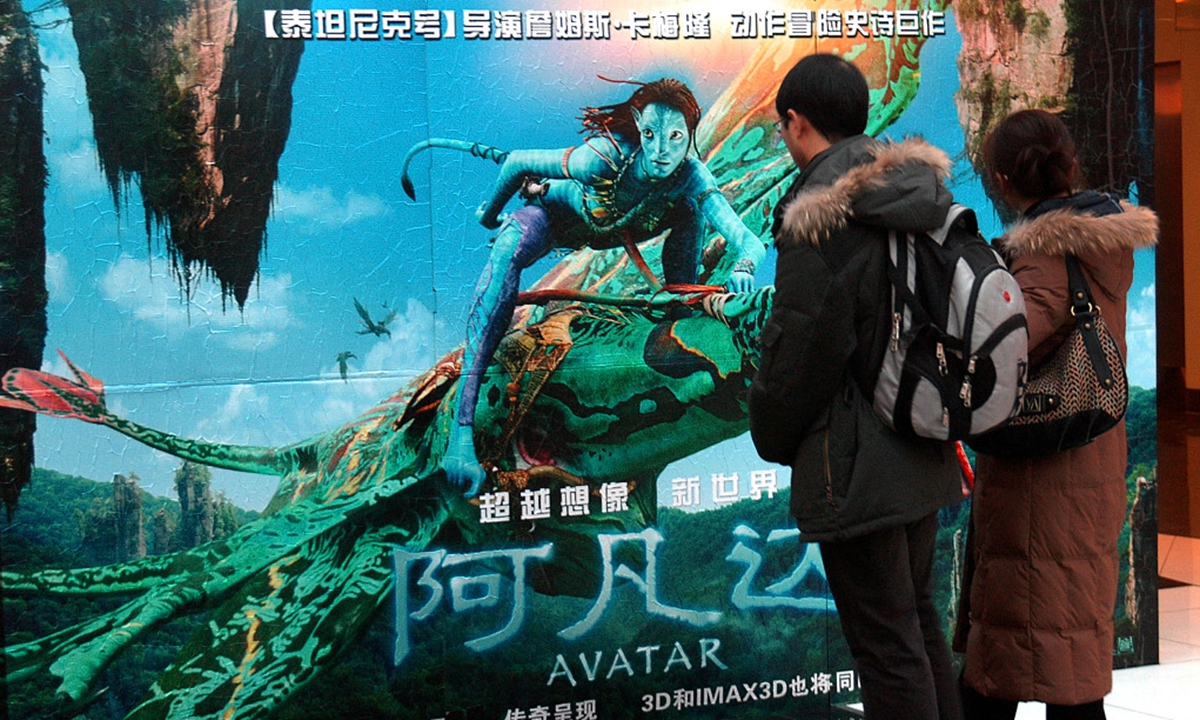How can Hollywood recapture the hearts of Chinese audiences?

Avatar Photo:VCG
The months from March to June are usually a peak time for Hollywood film releases in China especially Oscar award winners. However, due to the sudden storm of the COVID-19 pandemic, the global film industry has been going through some changes: The Chinese mainland overtook North America to become the world's largest box office market; recent Hollywood films have stumbled in China while Chinese films have flourished; Hollywood tried to use the classic blockbuster Avatar to recapture the hearts of Chinese audiences.However, Hollywood studios have not realized that their traditional marketing plans in China can no longer stir up interest in their films and that it is time to make an adjustment by localizing their marketing.
In 2021, Warner Bros Pictures' Tom and Jerry and Disney's Raya and the Last Dragon premiered in the Chinese mainland as pioneers in an attempt to woo Chinese audiences. Unfortunately, the two animated films did not perform well at the box office, only grossing 101 million yuan ($15.53 million) and 98.84 million yuan respectively as of Thursday, according to Chinese ticketing platform Maoyan.
This series of big disappointments for Hollywood films in the Chinese mainland began in 2020 with the box-office failure of highly anticipated films such as Tenet, Wonder Woman 1984 and Mulan, ushering in a complete rout and causing the box office of imported films to drop to 16 percent of the total box office.
Although the re-release of James Cameron's 2009 epic Avatar certainly made waves in China - the sci-fi blockbuster has earned 189 million yuan as of Thursday - the nostalgic sentiment that got Chinese audiences in theaters will not last long.
In addition to the fatigue Chinese audiences are feeling when it comes to typical Hollywood stories, uncreative special effects and a shortage of cultural empathy, the lack of local marketing adapted to local conditions has become a common problem for Hollywood movies in China.
Chinese audiences have lost interest in Hollywood's old-fashioned promotional channels such as media reports, stars coming to China, brand cooperation, and "localized" marketing attempts such as the use of Chinese brand ambassadors, Chinese theme songs or Chinese voice actors.
"For domestic marketing, long-term word-of-mouth marketing is a key task for domestic teams after the release of a film. But Hollywood only promotes their films before their release and once a film premieres, they will let it go," one observer analyzed.
Take Soul for example, the animated film's screen share was only 2.7 percent on its premiere day, but due to good word of mouth and praise from audiences, allowing the film to bring in 375 million yuan at the box office and become Pixar's second-highest-earning film in the market. However, if Pixar has pushed harder with post-release marketing for the film on Chinese social media, this high-scoring film would have assuredly performed even better at the box office.
Hollywood needs to rethink its strategy for China and make adjustments that include how to integrate their films with trending topics in China and how to play emotional cards from elements in their film in order to resonate with Chinese audiences.
Marketing for Raya and the Last Dragon was a step in the right direction. Disney worked proactively with vloggers on Bilibili, a hugely popular Chinese video-sharing website. Through interviews with vloggers and the production crew, the development of the film and the creativity that went into producing the film was better able to be understood by Chinese audiences.



